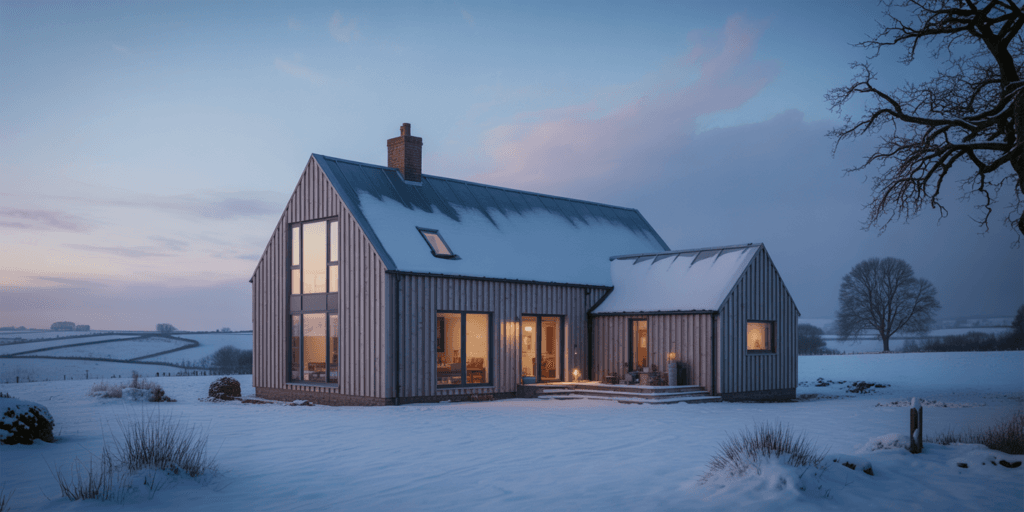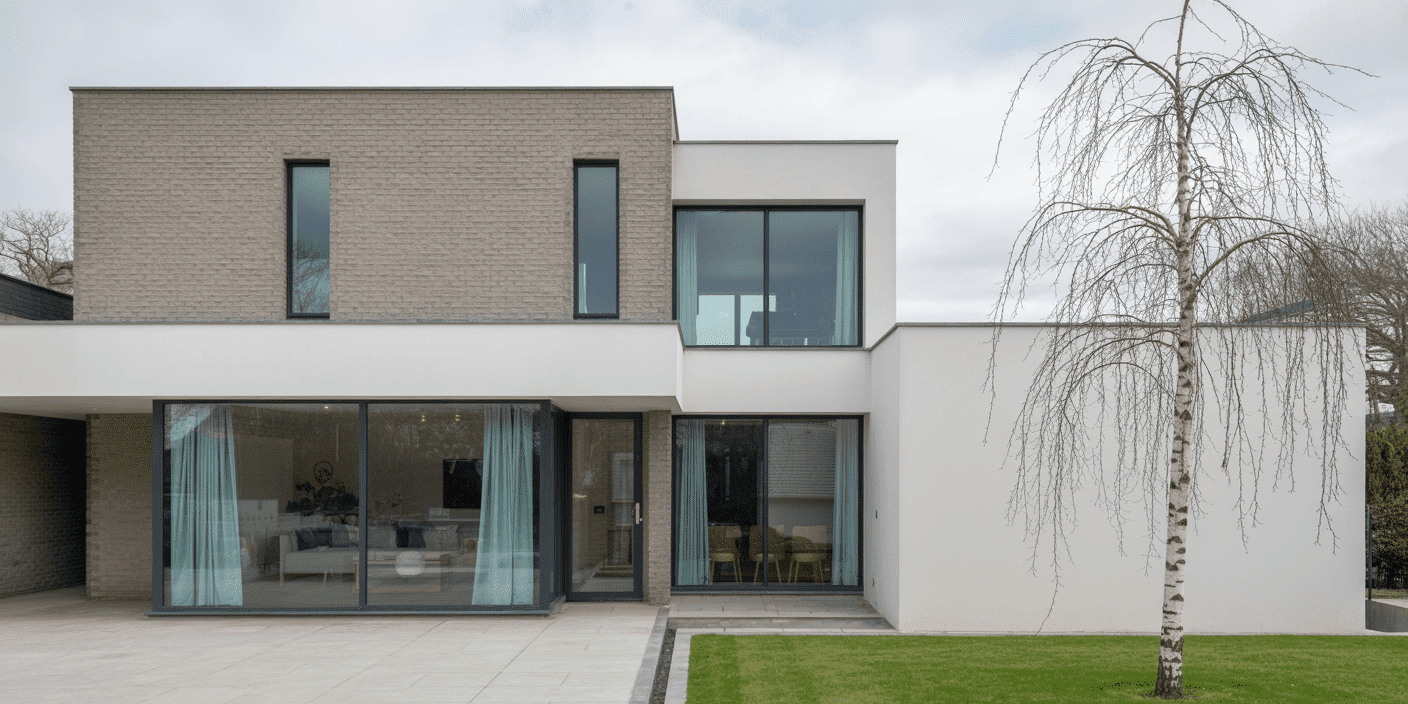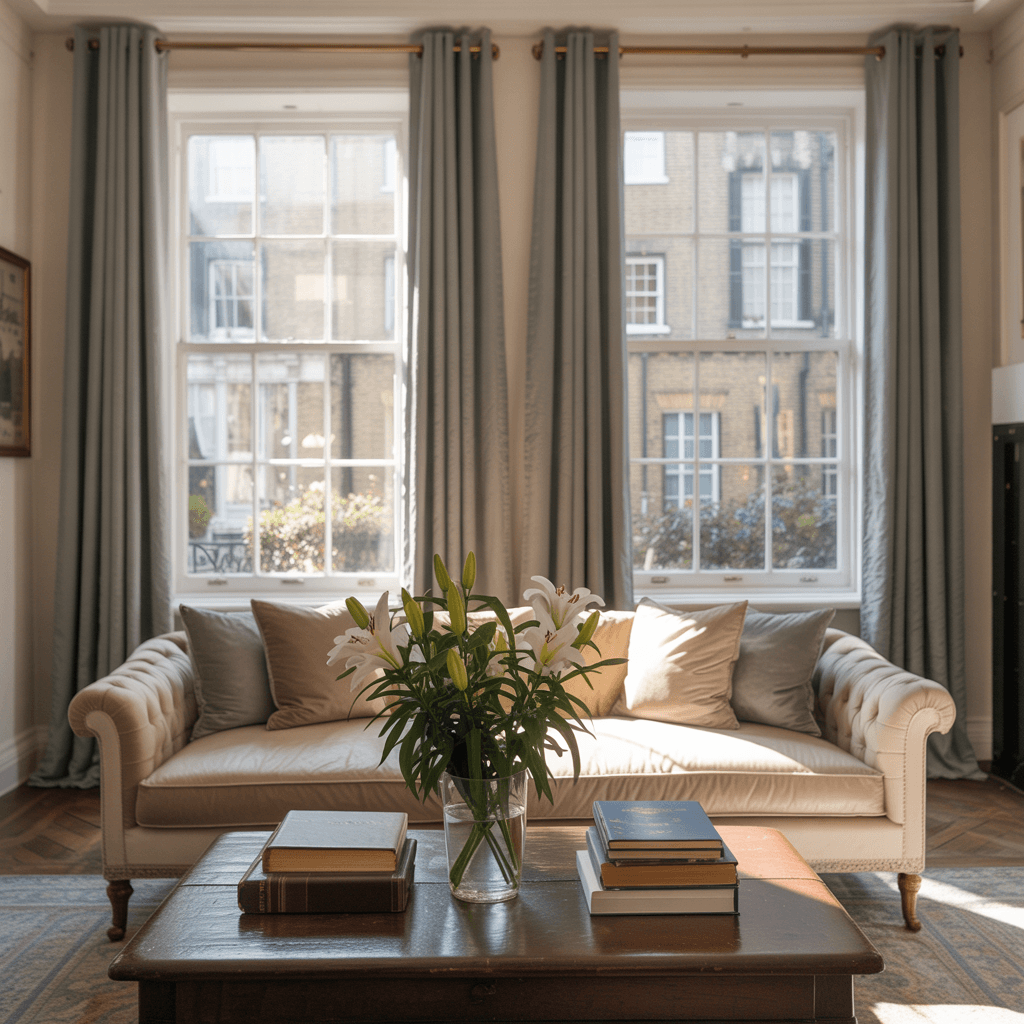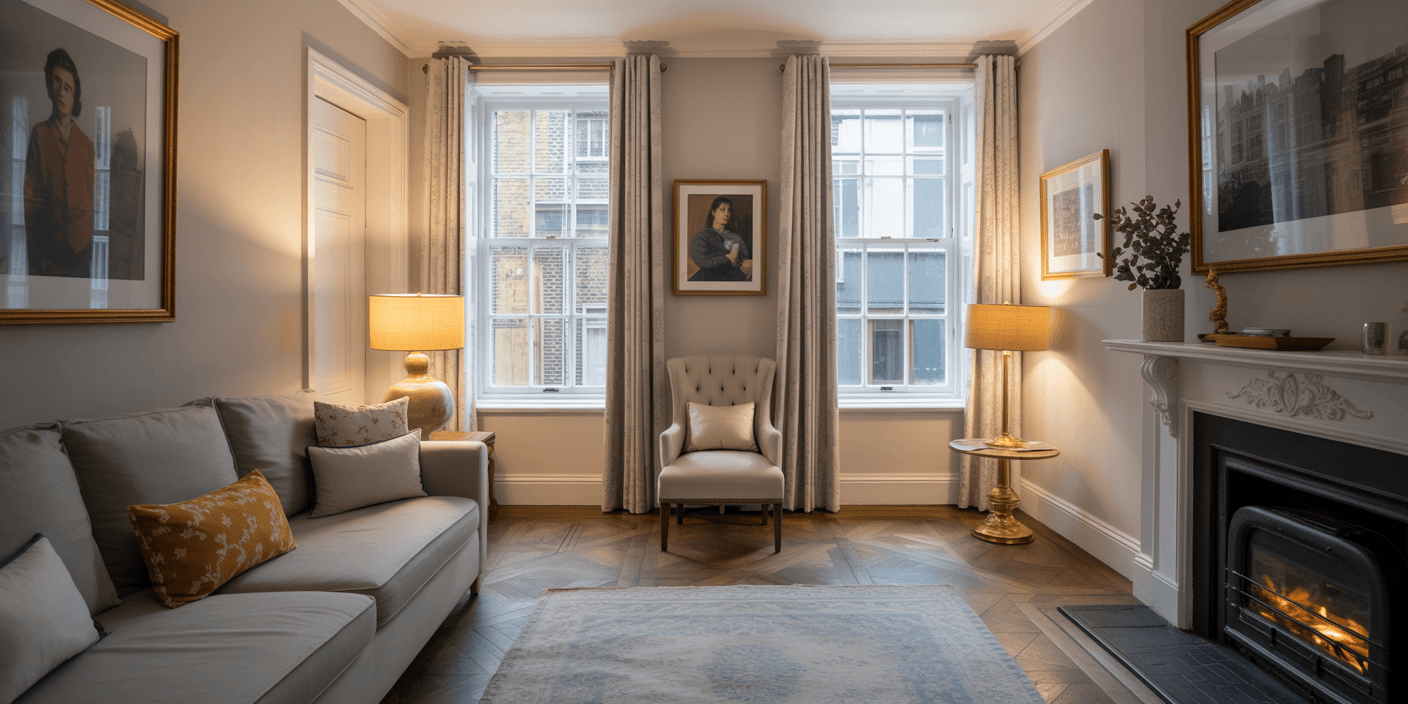The Big Reveal: Your Windows Are Lying to You
In countless London homes, the symptoms are familiar: an expensive heating system constantly engaged, subtle draughts along skirting boards, and an ambient chill that resists control. Despite sound construction and architectural pedigree, the interior climate remains persistently uneven.
The issue is seldom insulation in the walls or the loft.
It lies in a more overlooked component — the windows.
Too often, windows are regarded as decorative features rather than integral elements of a building’s thermal envelope. Aesthetic value is prioritised over functional performance. Many homeowners assume that standard double glazing suffices — reassured by sales literature and industry clichés. But in practice, those same windows continue to permit substantial heat loss, quietly draining energy every night while offering little resistance to seasonal extremes.
This inefficiency is systemic, not incidental. The reality is that most windows are manufactured to satisfy baseline regulatory thresholds — not to deliver sustained energy performance. They are designed to comply, not to conserve.
Triple glazing represents a decisive evolution in this regard. More than a third pane of glass, it constitutes a precisely engineered solution to the growing demands of thermal regulation, acoustic control, and environmental responsibility. It has emerged as the standard for high-performance fenestration — a specification rooted not in novelty, but in necessity.
Sash Windows London recognises this shift not as a passing trend, but as a professional imperative. Where conventional firms offer compliance, they deliver optimisation. Every frame is a balance of form and function — achieving architectural integrity without compromising thermal performance.
Because true craftsmanship isn’t just about how a window looks —
It’s about how effectively it works, long after the installation is complete.
U‑Values Demystified: The Metric That Matters
Most homeowners don’t know their window’s U‑value.
They just know the room never quite warms up.
The U‑value is the single most important number in your home’s thermal story — yet it’s the least understood. It measures how much heat slips through one square metre of your window for every degree of temperature difference between indoors and out. In other words, it’s a measure of loss. The lower the number, the warmer your home stays, the less your boiler works, and the lower your bills fall.
Here’s the quick truth:
- Old single glazing? Around 5.0 W/m²K — a thermal sieve.
- Tired double glazing from the early 2000s? 2.8 W/m²K — marginal improvement.
- Modern, well‑made double glazing? 1.4 W/m²K — acceptable, but not future‑proof.
- Precision‑engineered triple glazing? 0.8 W/m²K — passive‑ready performance.
Every decimal point matters. A drop from 1.4 to 0.8 doesn’t just sound technical — it means a warmer home, lower carbon footprint, quieter interiors, and thousands saved over time.
That’s why architects, developers, and homeowners serious about efficiency now treat U‑values the way engineers treat torque. It’s not marketing fluff — it’s the science of comfort.
At Sash Windows London, U‑values aren’t a footnote. They’re the headline. Each frame, spacer, and gas fill is chosen to close the gap between beauty and performance — ensuring that even a Georgian sash can outperform a modern casement.
Because your window shouldn’t just look solid.
It should hold warmth, preserve silence, and pay you back every winter.
Inside Triple Glazing: The Silent Workhorse of Your Home

Forget the word glazing for a moment. It sounds too polite — too flat. What we’re really talking about is a multi-layered shield between your home and the outside world. And it’s time we treated it that way.
Triple glazing is often misunderstood. Some see it as overkill. Others, a luxury. In truth, it’s a thermal system, engineered down to the millimetre — not just a third sheet of glass.
Here’s what makes it work:
Three Layers of Glass
Not two, three. Why? Because each pane slows heat loss, but it’s the gaps between them that do the heavy lifting. More space = more resistance = less energy loss.
Argon or Krypton Gas Cavities
These invisible layers are filled with inert gas — denser than air, motionless, and brilliant at slowing thermal transfer. Argon is standard. Krypton is elite.
Low‑E (Low Emissivity) Coatings
These ultra-thin metallic layers are applied to the inner faces of the glass. They reflect infrared heat back into your room, while still allowing sunlight through. It’s what keeps the warmth in without turning your home into a greenhouse.
Warm Edge Spacers
The edges of the glass units are often ignored. But traditional aluminium spacers conduct heat. Warm-edge spacers, used by Sash Windows London, minimise condensation and cold bridging — a key detail in passive window certification.
Thermally Broken Frames
Even the most advanced glazing is only as good as the frame it sits in. Timber-aluminium hybrids and composite materials, when thermally broken, stop heat escaping through the structure itself. This is where design meets discipline.
All of this adds up to something quietly remarkable:
A window that holds heat like a flask, blocks noise like a wall, and still lets in soft, natural light — all while passing the strictest building standards in Europe.
At Sash Windows London, this isn’t a menu of upgrades. It’s the baseline. Every unit is a sealed microclimate, engineered not just to meet U-value thresholds — but to live beyond them.
Because true luxury is never loud.
It’s silent, stable, and warmer than it looks.
Why Passive Windows Matter (Even If You’re Not Building a Passive House)
Say “Passive House” and most people picture an ultra-modern cube on a hillside — all zinc, glass, and angles. Futuristic. A bit sterile. Not exactly your Victorian townhouse in Clapham or that Edwardian semi in Putney.
But here’s the quiet revelation: passive performance isn’t just for new builds.
It’s for any homeowner who wants a house that feels right — every hour of the day, in every room, in every season.
Let’s clear the fog.
Passive windows aren’t just about hitting a regulation.
They’re about creating a home that holds its own — against winter, noise, and rising bills.
What Makes a Window Passive?
A Passive-Certified window must meet a tight set of criteria:
- U-value below 0.8 W/m²K
- Airtight installation (no hidden draughts or thermal leaks)
- Thermal bridge minimisation through frames and spacers
- High solar heat gain (to capture winter sun without overheating)
It’s not a single feature. It’s a system of resistances. And when executed properly, it turns a room into a haven — quiet, consistent, and efficient.
Why It Matters to You (Even If You’re Not Chasing a Certificate)
You don’t need to be building to Passivhaus standards to benefit.
Think of it like buying a car that could win Le Mans — even if you only ever drive it to the Cotswolds. The engineering still matters. The comfort still pays off.
At Sash Windows London, we apply passive-grade thinking to every install — even for sash replacements in conservation areas. You get:
- Lower bills
- Steady temperatures
- Zero draughts
- Tighter acoustic seals
- A home that already meets tomorrow’s regulations
And all of this? Hidden inside heritage-accurate frames, custom-made for your property, your planners, and your postcode.
Most people think Passive House tech is too advanced for period homes.
Sash Windows London exists to prove them wrong — with U-values that planners respect, aesthetics they don’t question, and performance you’ll feel every time you walk barefoot across the room.
Cost, ROI & the Comfort Equation
Let’s get one thing straight: triple glazing is not cheap.
It’s not supposed to be.
This isn’t a splash of paint or a pair of curtains. It’s the thermal envelope of your home. The boundary between comfort and compromise. The difference between an energy-efficient sanctuary and a money-leaking machine.
And if you’re renovating a high-value property in London, the real question isn’t “How much does it cost?”
It’s “What does it return?”
The Silent Payback
Windows is a long game.
Done properly, they repay their value year after year — not just in pounds, but in peace.
Here’s what triple glazing delivers, even before your next energy bill arrives:
- Up to 30% reduction in heat loss through window apertures
- Quieter rooms (you’ll forget there’s traffic outside)
- No cold spots by the glass — comfort becomes consistent
- No condensation, no mould, no repainting sills in spring
- Higher resale value, especially with documented U-values
- Future-proofing against regulation tightening (Part L, Future Homes Standard, Net Zero targets)
The Real Comparison
Cheap double glazing might cost 20% less upfront.
But if it has to be replaced in 10 years — or fails to meet upcoming U-value thresholds — it’s not a saving.
It’s a postponement of the inevitable.
And while others are price-matching per square metre, Sash Windows London is doing something different:
✅ Precision-spec’d systems that outperform building regs
✅ Designed to pass conservation scrutiny
✅ Manufactured and installed with zero shortcuts
✅ Backed by data, not discounts
What the Numbers Say
Let’s assume you’re spending £40k–£60k on a window package across a mid-size property.
Now pair that with:
- £1,200–£1,800 annual energy savings
- £10k–£20k uplift in EPC rating and resale bracket
- 20–30 year install lifespan
- 0.8 U-value compliance ahead of 2025 standards
That isn’t a cost. That’s capital efficiency with architectural beauty thrown in.
You wouldn’t cut corners on insulation.
Why do it on the one part of your home that moves, opens, breathes — and leaks the most heat?
When you choose Sash Windows London, you’re not just buying glazing.
You’re securing performance, regulatory confidence, and long-term returns — in a frame that your neighbours will mistake for original joinery.
Modern Performance. Period Detailing. Zero Compromise.

For years, homeowners have faced a frustrating trade-off:
Keep the character of your windows, or gain the comfort of performance glazing. Never both.
That era is over.
Today, you can have heritage elegance and passive-grade insulation — if you know where to look, and who to trust.
Elegance That Outsmarts the Eye
At a glance, a heritage sash window from the street might look like it was crafted in 1875. But behind the timber detailing, it may be housing:
- Triple-glazed, gas-filled units
- Warm-edge spacer technology
- Low-E coated glass
- Thermally broken frames
- Acoustic seals
- Security-rated locking systems
This isn’t surface-level conservation. It’s invisible engineering, designed to satisfy both the planning officer and the thermal camera.
Built for Conservation. Backed by Planning Insight.
Retrofitting high-performance glazing into conservation areas is often misunderstood. Homeowners are told it’s impossible — that triple glazing ruins sightlines, and planners won’t allow it.
Not true.
At Sash Windows London, we’ve spent years working hand-in-hand with planning authorities, conservation officers, and architects across boroughs like:
- Kensington & Chelsea
- Camden
- Westminster
- Richmond
- Hampstead
Each window is made to match the original frame profile, down to the millimetre, and then custom-engineered internally to exceed current building regulations.
The result?
- No aesthetic compromise
- No compliance anxiety
- No pushback from planners
- And no more draughts in your reading room
Performance That Disappears Into the Architecture
The reason most installers won’t offer this? It’s difficult. It’s detail-heavy. And it demands a balance between:
- Craftsmanship (so it passes visual scrutiny)
- Building science (so it hits U-value targets)
- Installation precision (so nothing leaks, squeaks, or cracks)
But that’s exactly why Sash Windows London exists — to sit at that intersection. To make windows that don’t just look right, they feel right.
Because true luxury isn’t loud.
It’s silent warmth, invisible seals, and frames that hold history while shielding you from the future’s energy prices.
Planning, Compliance & The Invisible Win
Mention building regulations at a dinner party, and watch eyes glaze over faster than a poorly installed double unit.
But behind the bureaucracy lies something vital — a roadmap to a home that’s safer, warmer, quieter, and more secure.
The problem? Most installers treat compliance as an afterthought.
At Sash Windows London, it’s the design brief.
The Regulations That Matter (and Why They Exist)
Let’s decode the three key Parts of the Building Regulations that every window must address — and how passive-grade systems make them effortless.
Part L: Conservation of Fuel & Power
- Defines minimum U-value standards for windows
- As of 2022, new windows must hit 1.2 W/m²K or lower
- Passive windows exceed this — usually <0.8 W/m²K, future-proofing your home for 2025 and beyond
Benefit:
→ Lower energy bills, better EPC ratings, and no last-minute compliance panic during resale or renovation.
Part Q: Security (New Dwellings)
- Applies to all new builds or homes converted into flats
- Requires PAS 24-rated windows: tested against forced entry and impact
- Triple-glazed units with laminated glass and multi-point locks meet or exceed this
Benefit:
→ Insurance compliance, peace of mind, and long-term asset protection.
Part K: Safety (Protection from Falling, Collision & Impact)
- Governs where safety glass is required (typically low-level glazing)
- Passive-certified windows use laminated or toughened glass as standard, ensuring invisible compliance
Benefit:
→ Full coverage for families, rental properties, and new buyer inspections.
Planning Officers Aren’t the Enemy. Poor Spec Sheets Are.
Most planning delays don’t come from difficult officers — they come from unclear documentation.
Ambiguous sightlines. Poor frame samples. Vague thermal performance claims.
Sash Windows London eliminates this friction.
- Detailed CAD profiles for every heritage frame
- Certified U-value test results
- Planner-ready documentation packs
- Conservation-accurate timber sightlines
- Pre-approved specs for listed and conservation zones in most boroughs
Result?
→ Faster approvals. Fewer objections. Installations that sail through planning and keep building control silent.
Compliance Without Compromise
Most homeowners don’t want to know the building regs.
They just want a warm home that passes inspection, keeps the planners happy, and looks like it’s been there forever.
That’s exactly what passive-grade glazing — installed with planning foresight — delivers.
And it’s exactly what Sash Windows London has mastered.
Silently. Consistently. Beautifully.
Upgrade to Passive Elegance Today
By now, you’ve likely realised: this isn’t just about windows.
It’s about the feel of your home.
The comfort in the corners. The quiet in the mornings. The radiators you no longer need to touch. The bills you stop noticing.
It’s about installing peace of mind, one pane at a time — without altering the character of your home, or inviting planning headaches into your renovation.
Passive-grade windows aren’t the future.
They’re what your future deserves.
Why Act Now?
The building regulations aren’t easing up — they’re tightening. Energy prices aren’t falling — they’re fluctuating. EPCs are becoming property deal-breakers. And conservation officers are growing more exacting.
Waiting costs more than acting.
Why Sash Windows London?
Because they do more than install glazing.
They:
- Engineer invisible performance into period frames
- Preempt planning objections with meticulous detailing
- Exceed regulations while preserving aesthetic heritage
- Install systems that feel like they’ve always belonged
From Georgian terraces to modern townhouses, from Camden to Chelsea — Sash Windows London has quietly reshaped what a high-performance window can be.
Without shortcuts. Without spectacle. Just uncompromising execution.
Ready to Upgrade?
Whether you’re planning a full renovation, replacing tired frames, or preparing your home for the next 25 years, now is the time to install more than just glass.
Install comfort.
Install compliance.
Install legacy-grade craftsmanship, hidden in plain sight.
Book a consultation
Request a thermal assessment
See planner-approved case studies
All from the only name that understands beauty means nothing… if your home can’t hold the heat.
Sash Windows London.
Passive. Period. Perfect.







